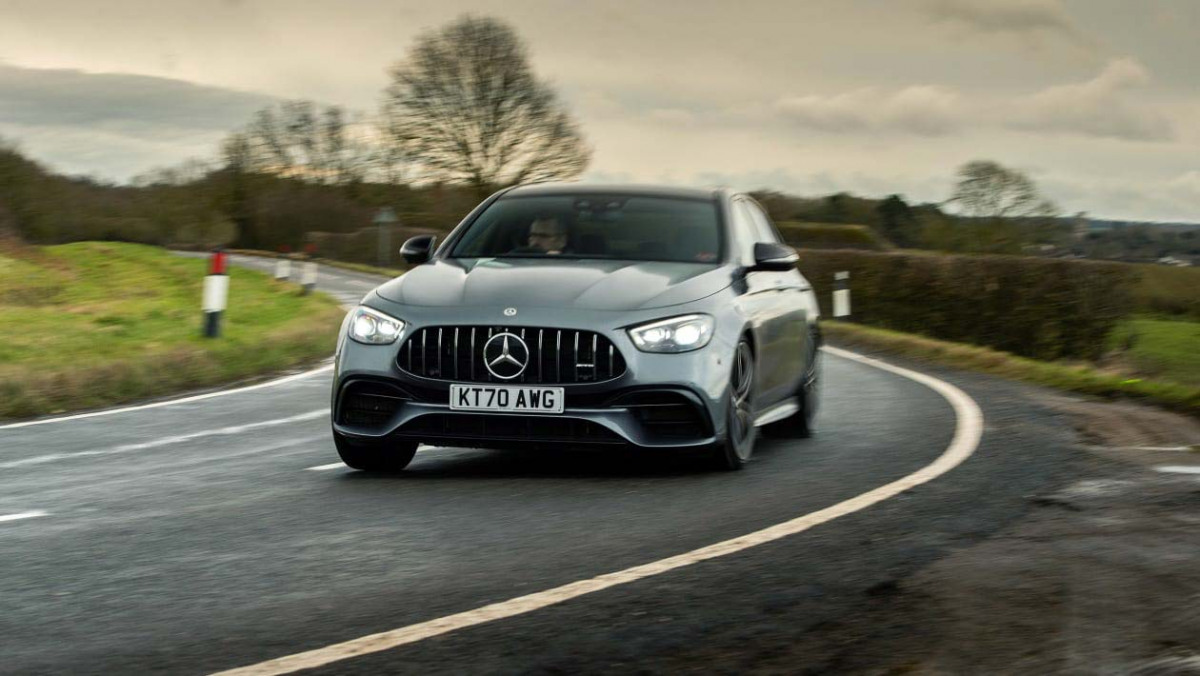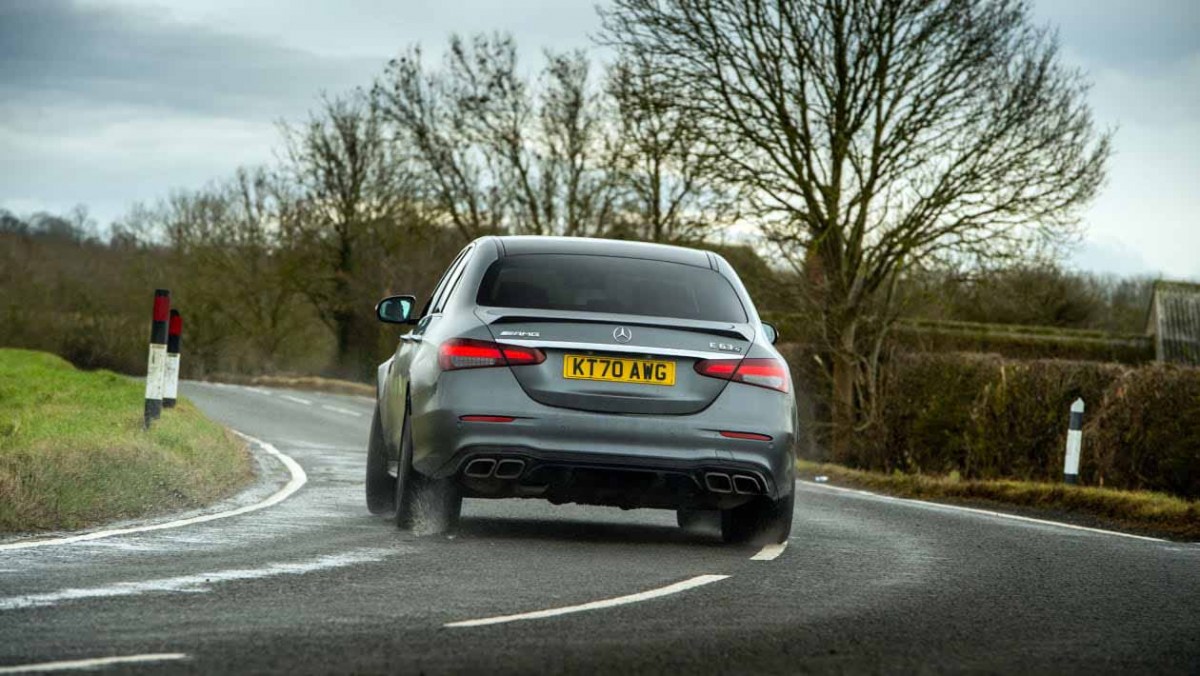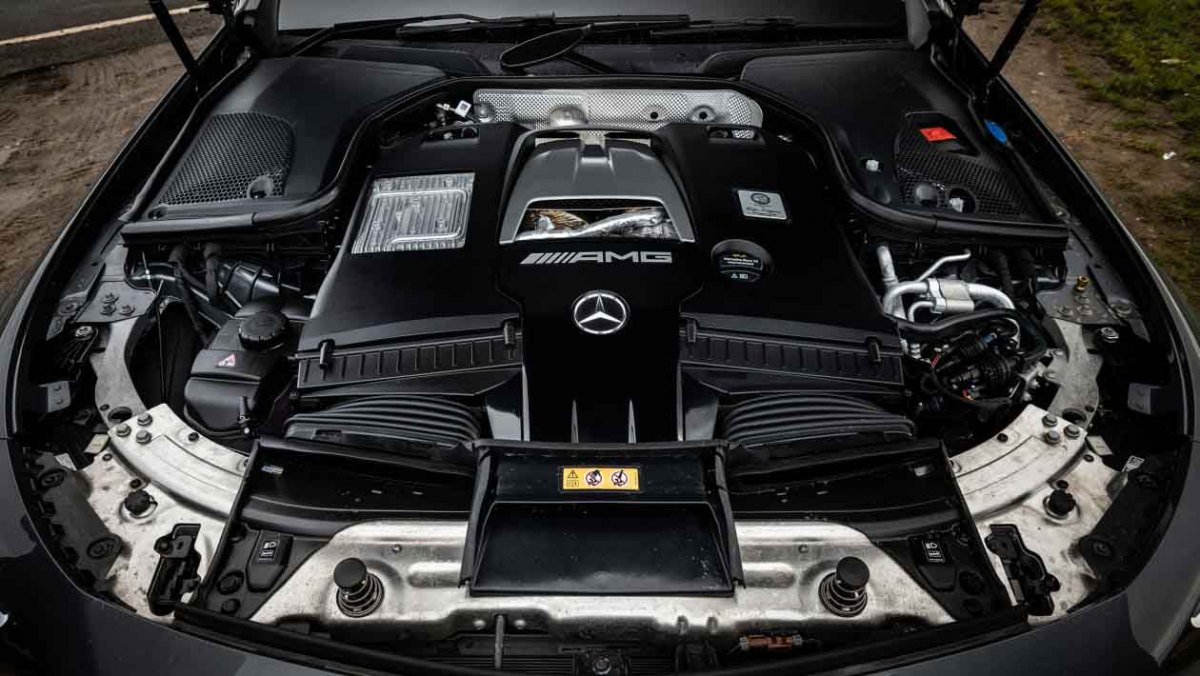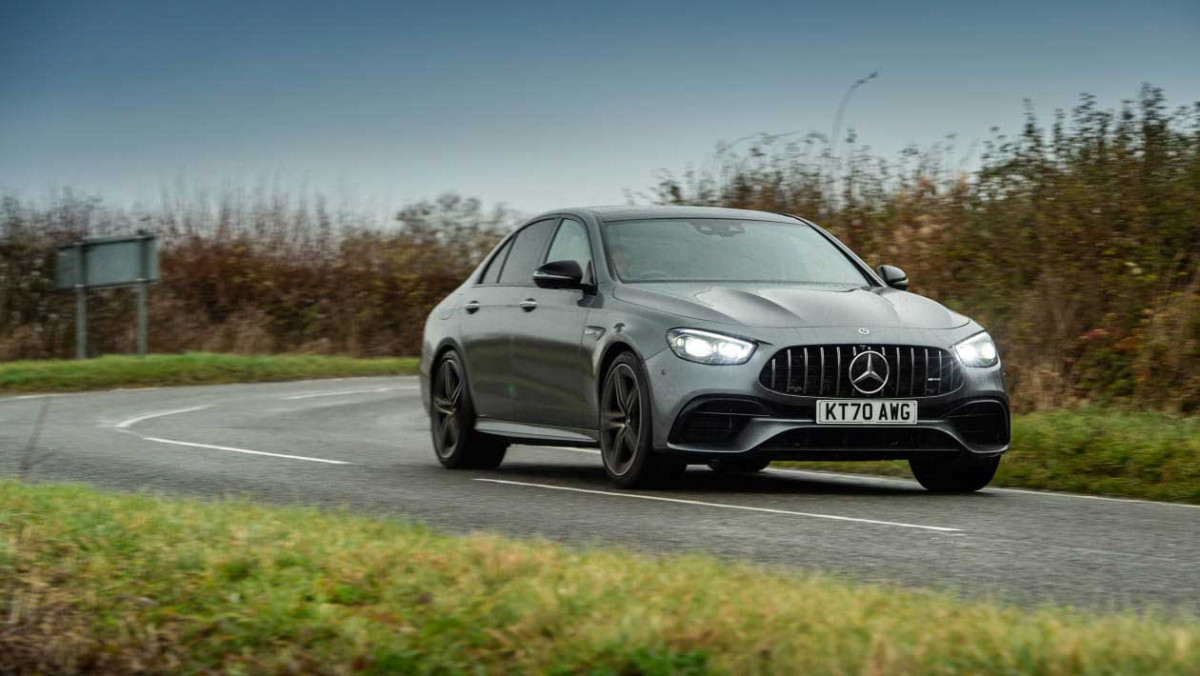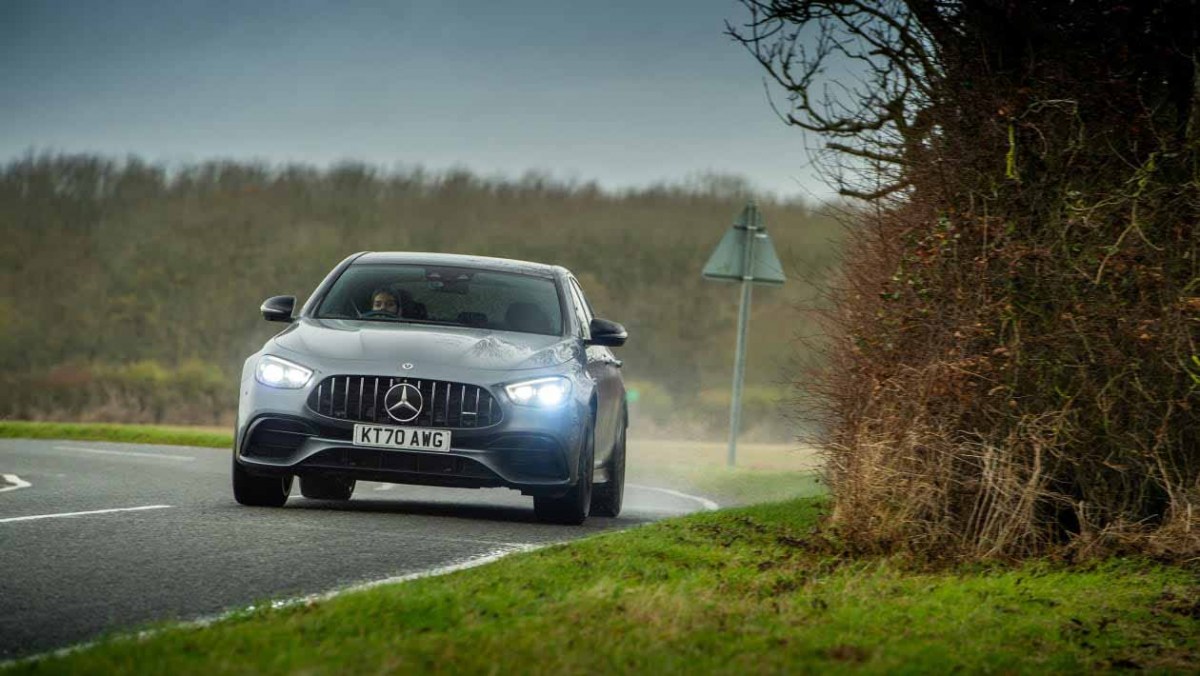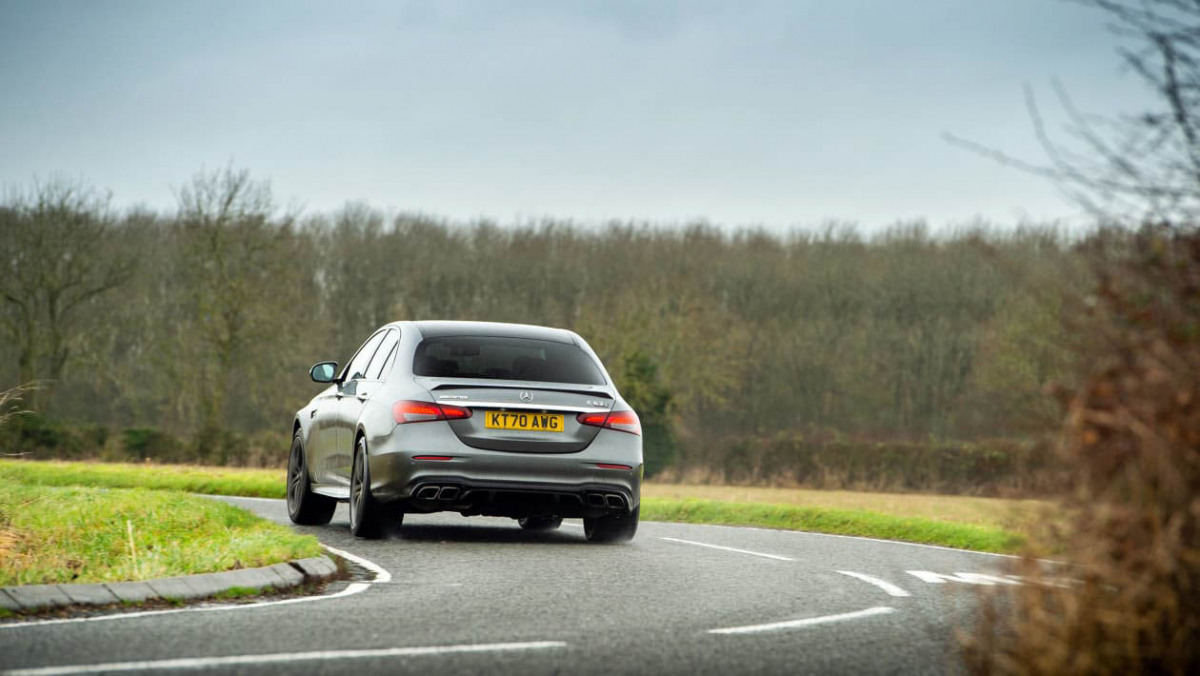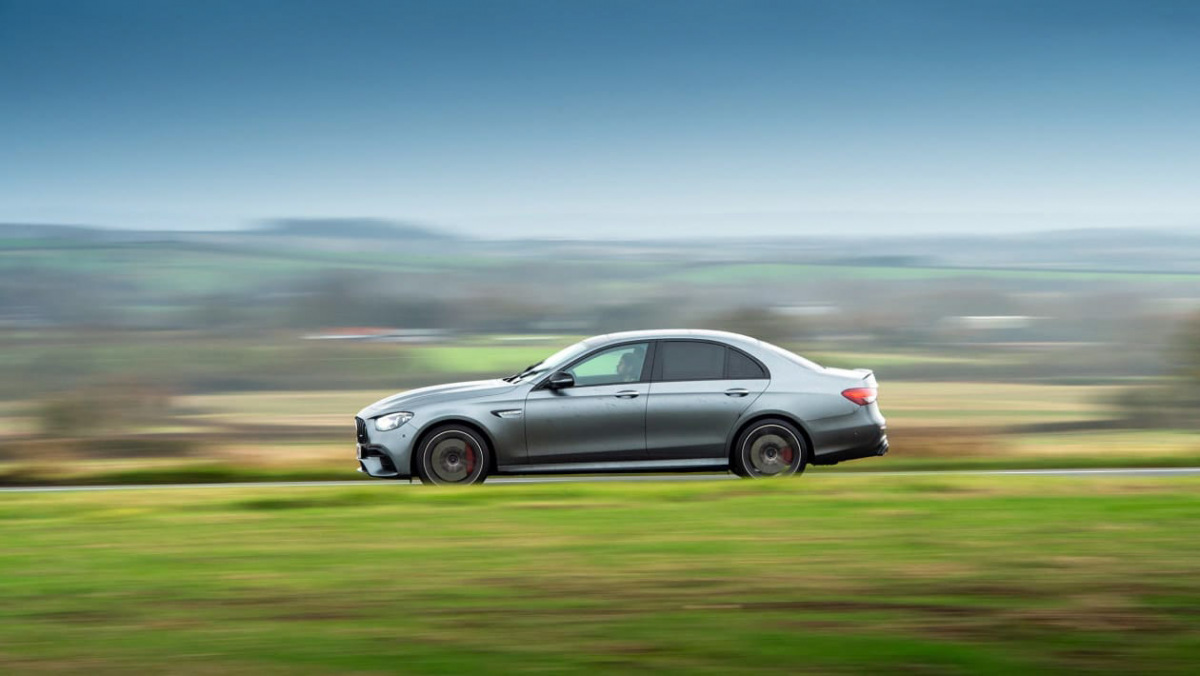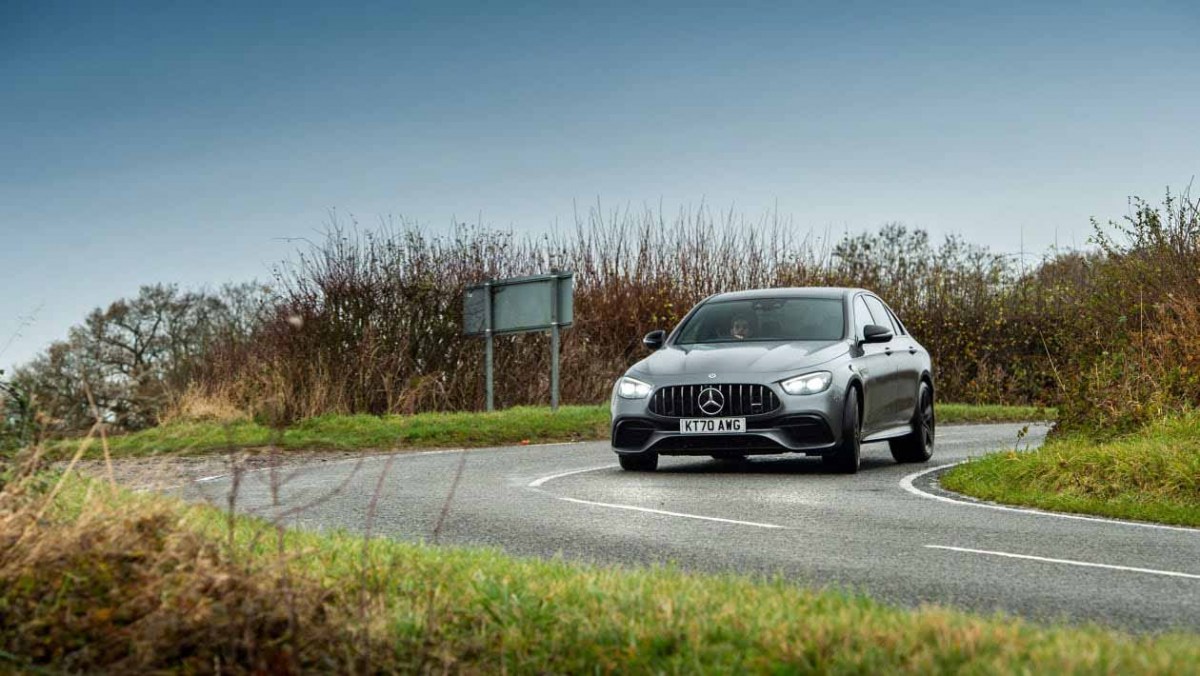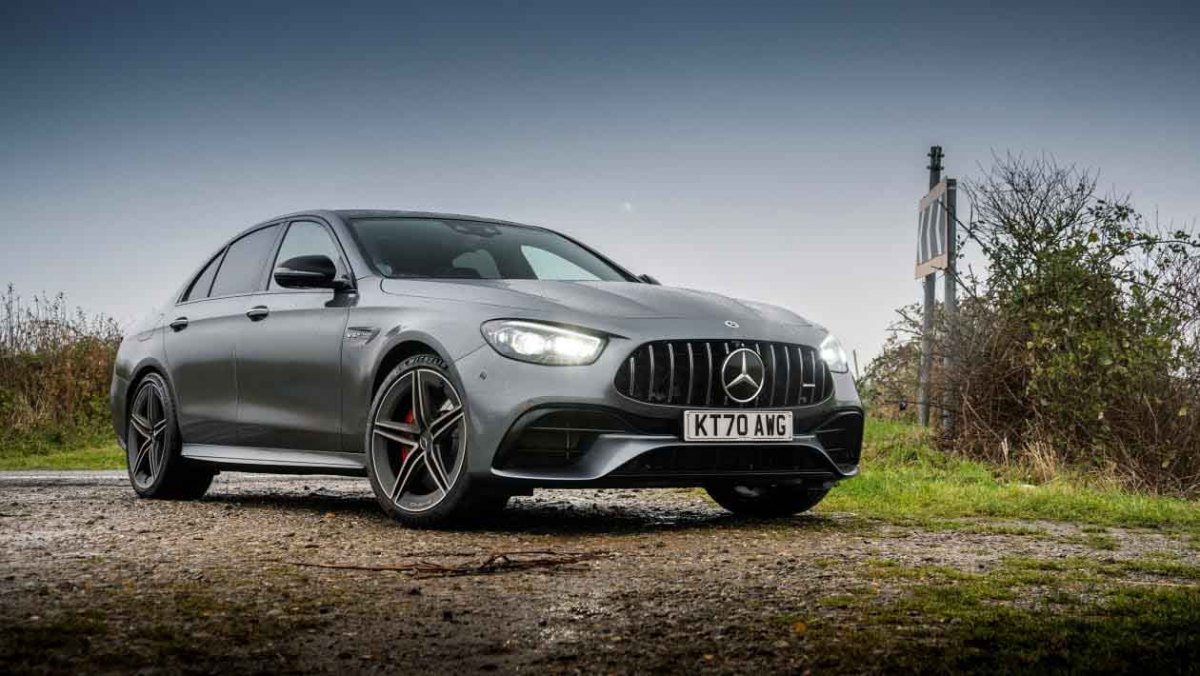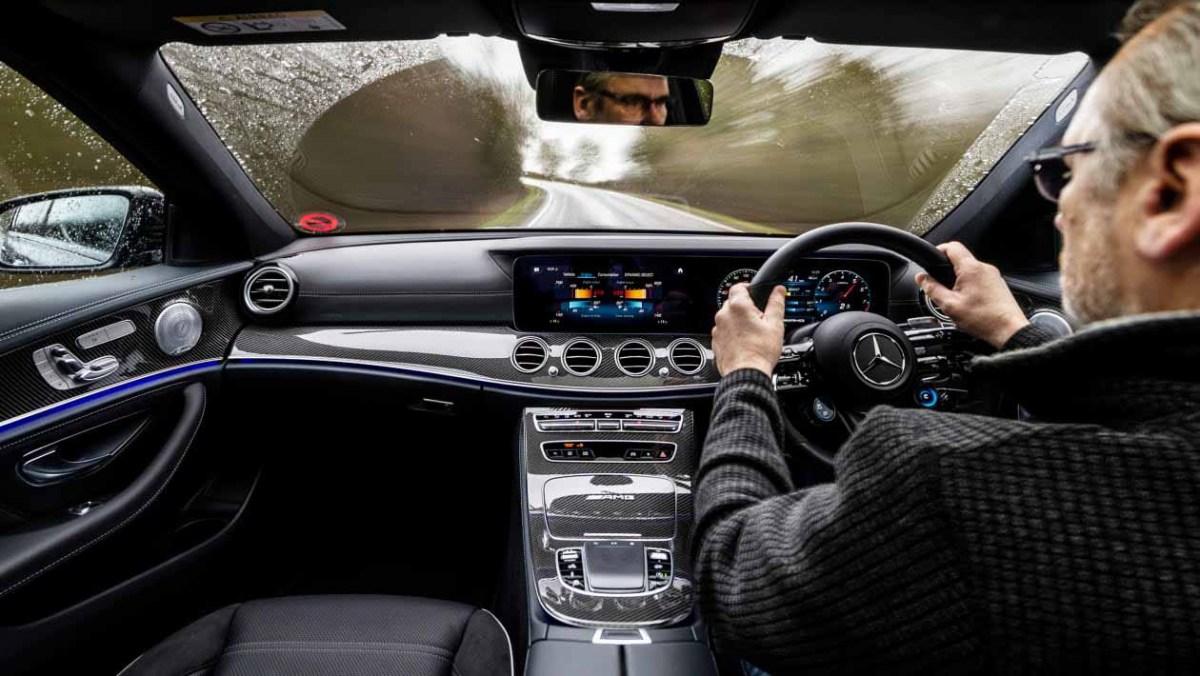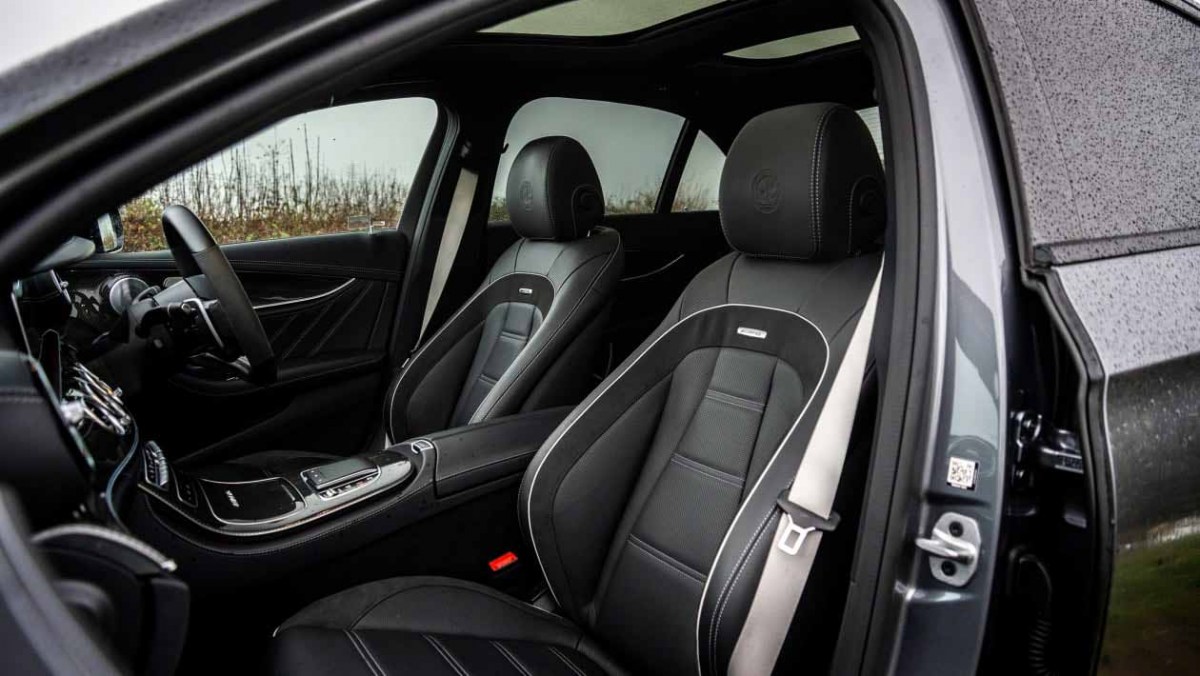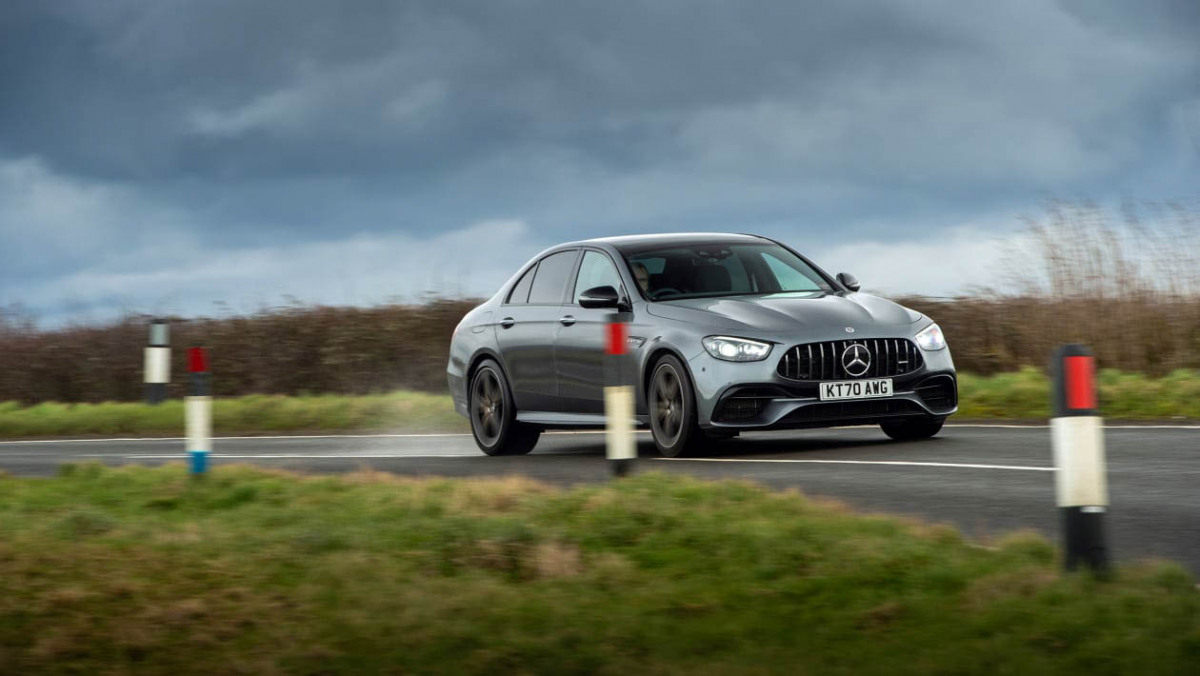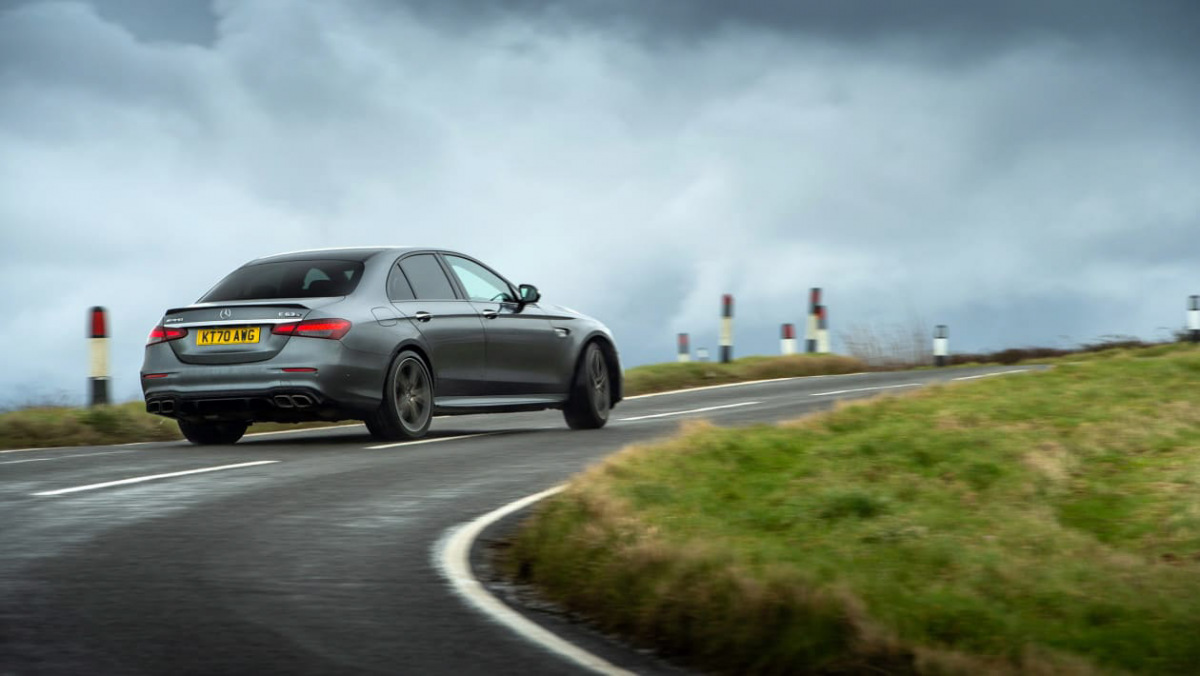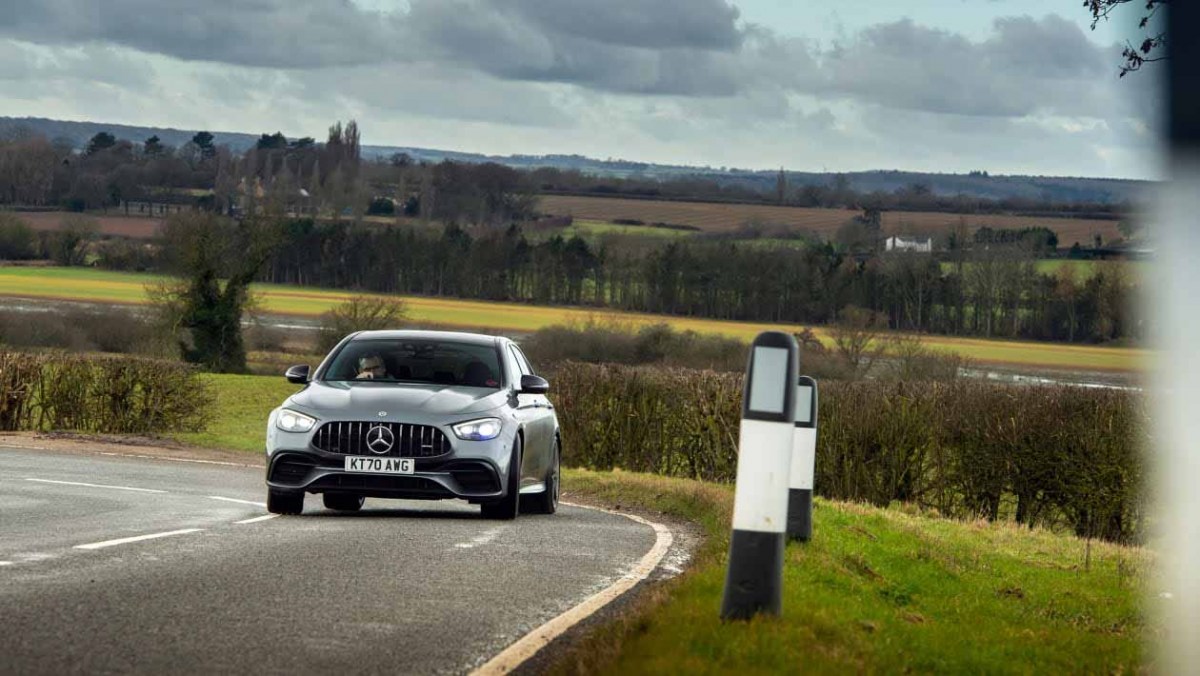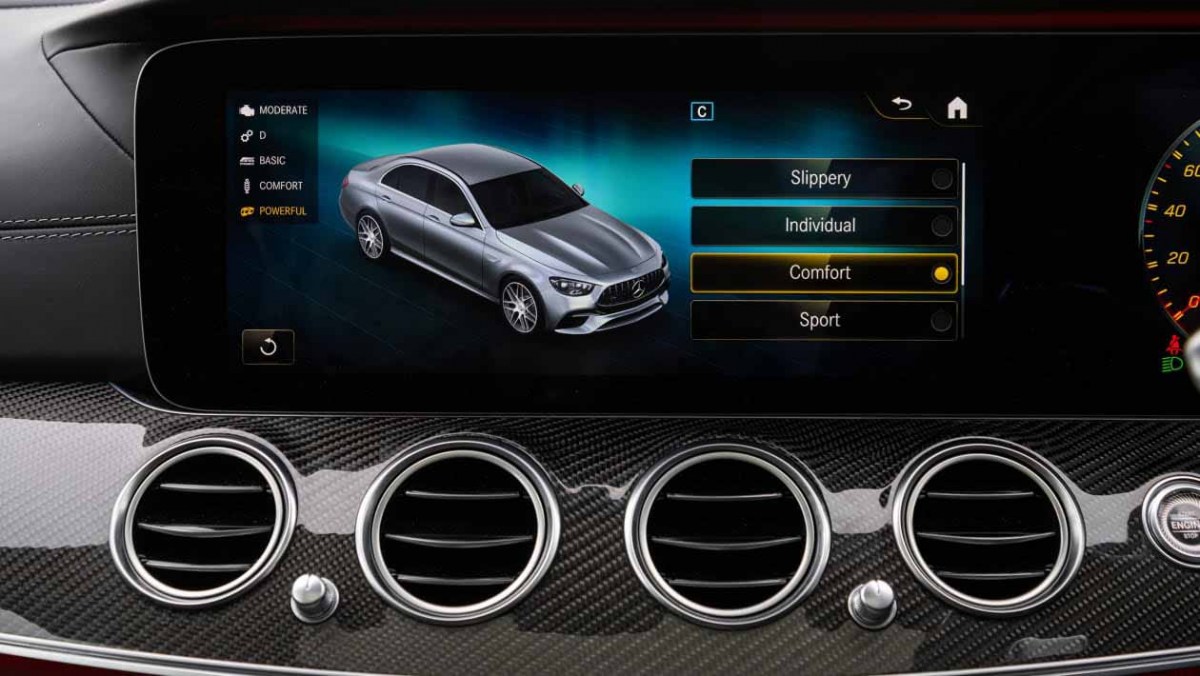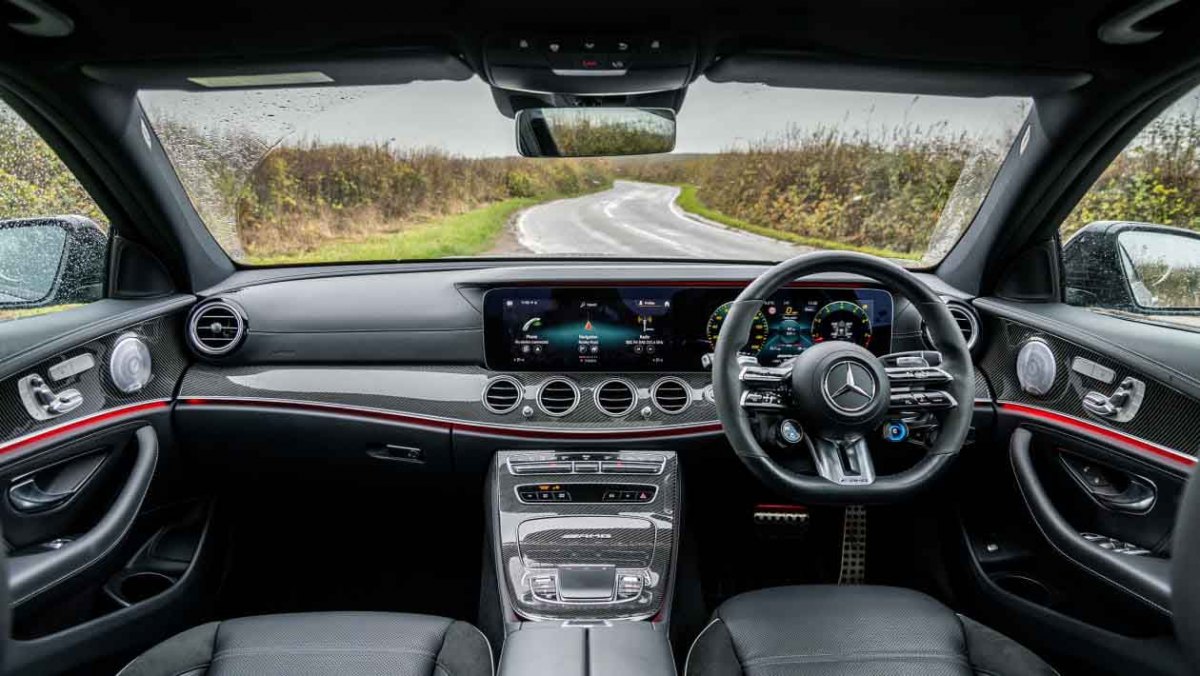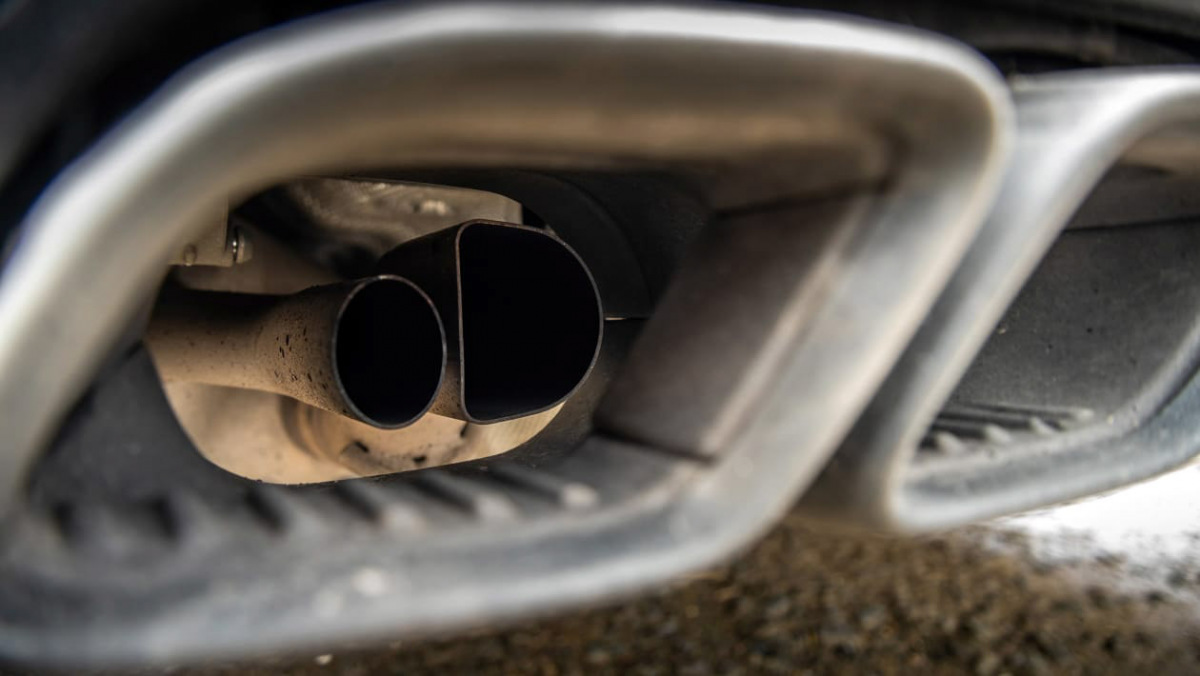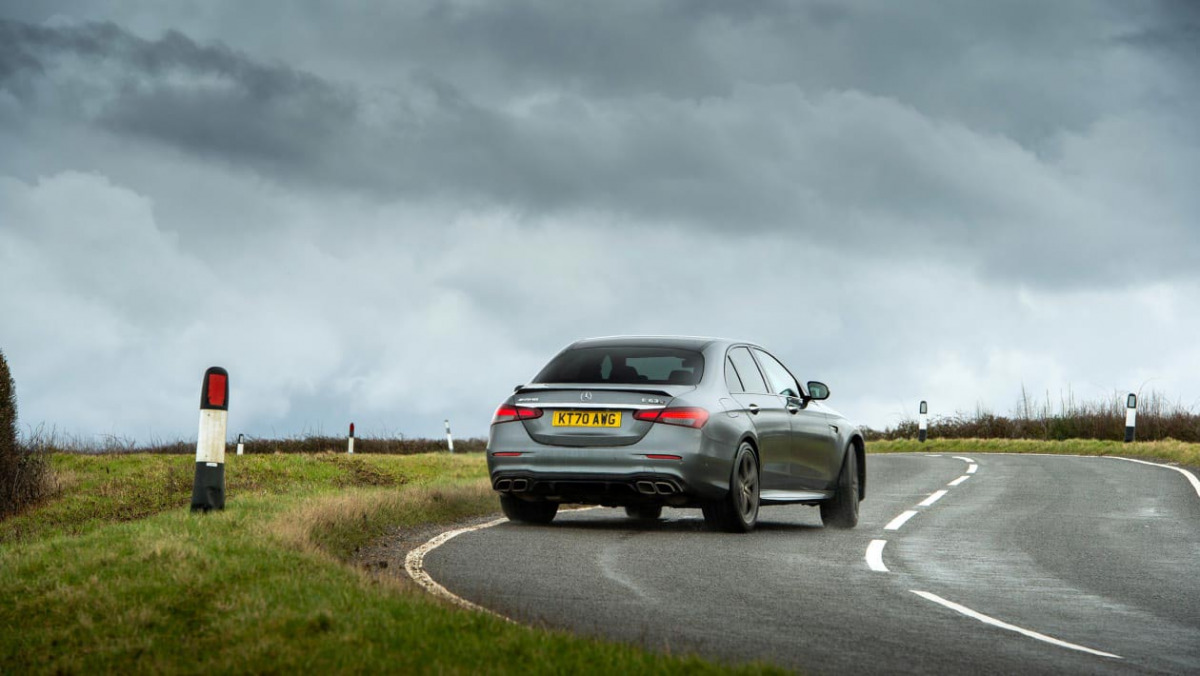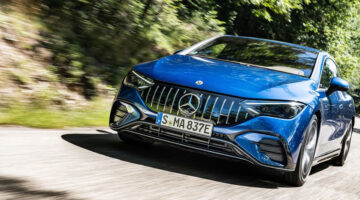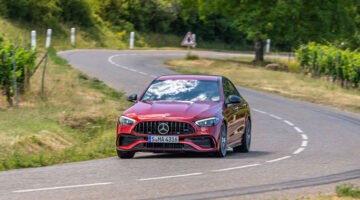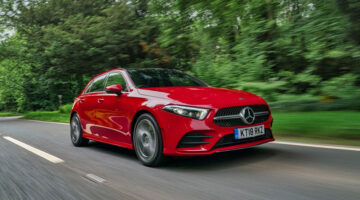The new Mercedes-AMG E63 S isn’t just a German four-door muscle car – it’s exciting, edgy and captivating too
| Superb powertrain matching huge pace with character, engaging and entertaining handling | |
| Firm ride in all modes, transmission not quite as slick as some rivals |
The Mercedes-AMG E63 used to be the ideal German muscle car to sit in the fast lane of an Autobahn, scaring other cars out of its way as it dispatched hundreds of kilometres with a plush interior, comfortable seats and a distant rumble from its oversized V8 engine in front of you.
No one seems to have told AMG’s engineers that though, because as well as those attributes, Merc’s current E63 S is as gifted down a tortuous B-road as it is on a derestricted highway. It might well be big and heavy, but it’ll move with the agility of a car 600kg lighter while being genuinely entertaining in the process
Its vast range of abilities can be partly attributed to its decoupleable four-wheel-drive system, something that has since been mimicked around the industry in rivals such as the BMW M5. It’s a trait that stops the E63 S AMG from just falling into the mould cast by previous generations, and one that helps it be a deeply desirable do-it-all performance car, rather than just an overpowered E-class.
The range has been condensed since its initial launch in 2017, dropping the 576bhp ‘standard’ E63 in favour of offering a single, highly specified 603bhp E63 S, available in both saloon and estate forms. It’s an expensive object at nearly $120,000, but then so has the supersaloon caste risen to the same threshold.
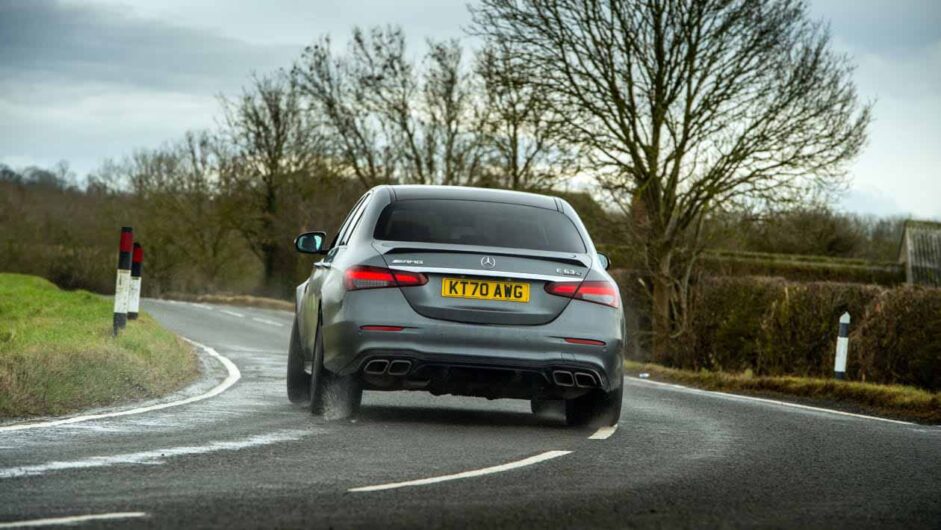
Prices, specs and rivals
Mercedes-Benz’s simplification of its model ranges has spread to the flagship E-class, with the V8-powered E63 now available in 603bhp S form only. This, together with the broad kitchen sink approach to the standard specification, has raised the E63 S’s price to $118,295 in saloon form (the estate is just $2500 more at $120,770). This might seem like a faintly preposterous hike from the $100,000 price tag the E63 started with in 2017, but it comes with quite literally every option ticked.
Equipment highlights include standard 20-inch wheels, a Night Package that removes most external brightwork and replaces it with gloss black elements, and the Premium Plus pack that bundles a panoramic glass roof, Burmester hi-fi, Multibeam LED headlights, 360-degree parking camera, a full suite of active driver aids – we could go on.
If spending near-six figures on an E-class sounds crazy, it is worth mentioning the E63 S’s key rivals also operate in the same pricing bracket, with BMW’s M5 Competition sitting a few thousand more at $119,240 and Audi’s RS6/7 extending way into six figures. The BMW is arguably even faster than the AMG, with its 616bhp twin-turbo V8 pumping out slightly more power, but then is metered out with less torque.
Audi’s new RS6 and RS7 are split between three trim levels. Entry RS6 Avants start at $115,000, rising to $135,460 for the fully loaded Vorsprung. RS7 models are around $5000 more trim-for-trim. Both Audis also have less power at 592bhp, but neither could be mistaken for slow and are more dynamically capable than ever before.
The Porsche Panamera operates at a higher price point, sharing its six-figure tags with AMG’s own GT63 S, which is now the thick end of $170,000
Performance and 0-100 time
Since its first appearance in the AMG GT, Mercedes-AMG’s 4-litre twin-turbo hot-V V8 engine has become ubiquitous throughout the range. Not only does it appear in all the GTs, from S to R, you’ll also find it in the C63, S63, GLC63 and, of course, the E63.
In the E63 S, it puts out 603bhp between 5750 and 6500rpm and a whopping 627lb ft of torque between 2500 and 4500rpm. This is the second-highest output currently generated by this specific engine, with only the AMG GT63 S pumping out more power at 630bhp.
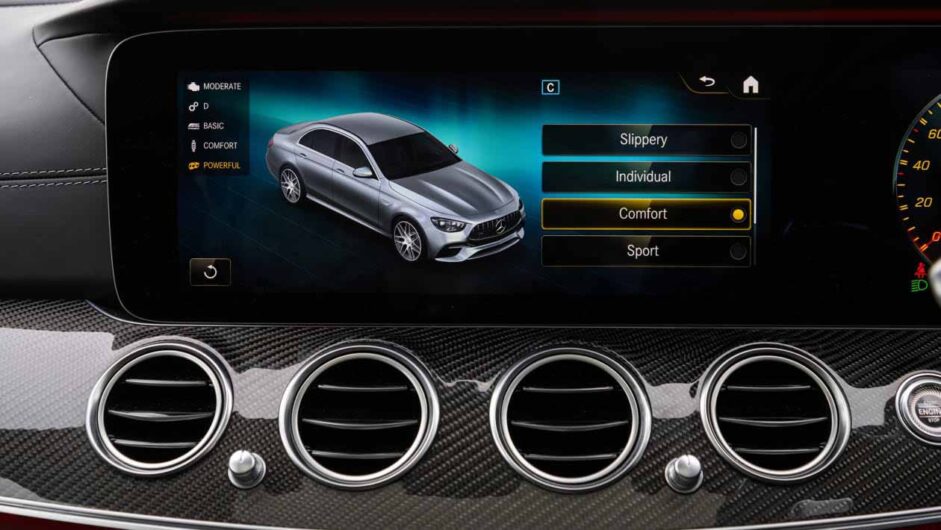
With the traction control turned off and the car set to its Race mode, pulling both of the steering wheel’s paddles will then engage rear-wheel drive, or Drift Mode, which like the system in the BMW decouples the front axle for lurid smokey evaporation of the rear tyres.
All E63s use a nine-speed automatic gearbox that Mercedes calls Speedshift MCT. However, rather than employing a torque converter to transfer drive from the engine to the transmission, it uses a pack of ‘wet’ clutches for sharper shifts with more of a discernable thump. It’s not as responsive as the M5’s torque-converter eight-speed, but is more emotional than the BMW.
Engine and gearbox
Purists and connoisseurs of sports saloons of old were appalled by the introduction of four-wheel drive on the E63 – cynics would argue the Drift Mode (the rear-wheel-drive-only setting) on the S is just a gimmick to placate fans of the old-style oversteering powerful saloon cars.
But the results of the all-wheel drive are clear when you look at the acceleration times. Officially, the 1880kg saloon accelerates from 0 to 100kph in 3.4sec. When we timed the E63 S with our own gear, we recorded a 0-100kph time of 3.4sec. That’s 0.1sec faster than the 0-100kph time we logged in a Ferrari 599 GTB or a F430 Scuderia. And that’s in a big saloon car.
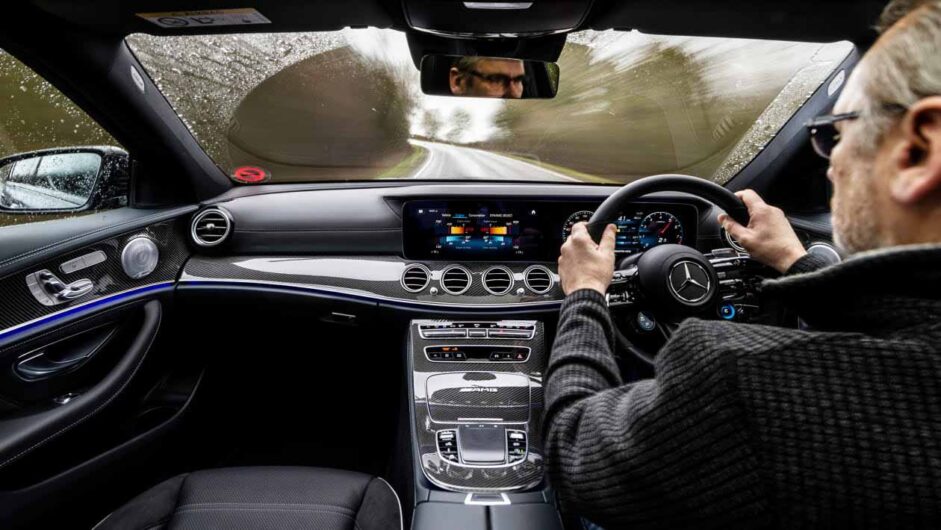
Estates are 0.1sec slower than the saloon, which makes little to no discernible difference on the road, and all cars have a limited top speed of 250kph. What on-paper numbers don’t tell you is the unending punch that the E63 S’s 627lb ft of torque gives it at any speed and at any revs. This AMG twin-turbo has always been impressive at minimising turbo lag and in the E63 S is no different, hitting its plateau of torque with almost no delay.
Ride and handling
The mid-cycle update has given the E63S more than just a new nose, as it’s driving experience has also been updated to provide a slightly different feel to the previous version, albeit one that’s no less exciting. Straight away, two major things instantly feel different, first being the much more demure tone to the engine-note. The engine is largely the same as it was before, but new particulate filters in the exhaust have dramatically cut down the V8’s noise.
It’s much less muscle car than before, and has even given up the childish pops and bangs except when in the sportiest driving mode. There’s also more of an obvious augmentation to the engine note through the cabin’s speakers, to the point where if the car sounds an alarm (due to various factors like the collision warning system or parking sensors) the engine note almost entirely disappears.
Adding to this new sense of restraint is the E63S’s ride quality, which is much much more compliant than it used to be. This has made it a more relaxed car to drive at normal speeds. It no longer crashes into bumps or feels brittle like the old car sometimes did, yet the scrub on full lock and propensity to sniff out cambers and tramlines is still there, suggesting it’s just as focused as before, even if the dampers have been toned right down.
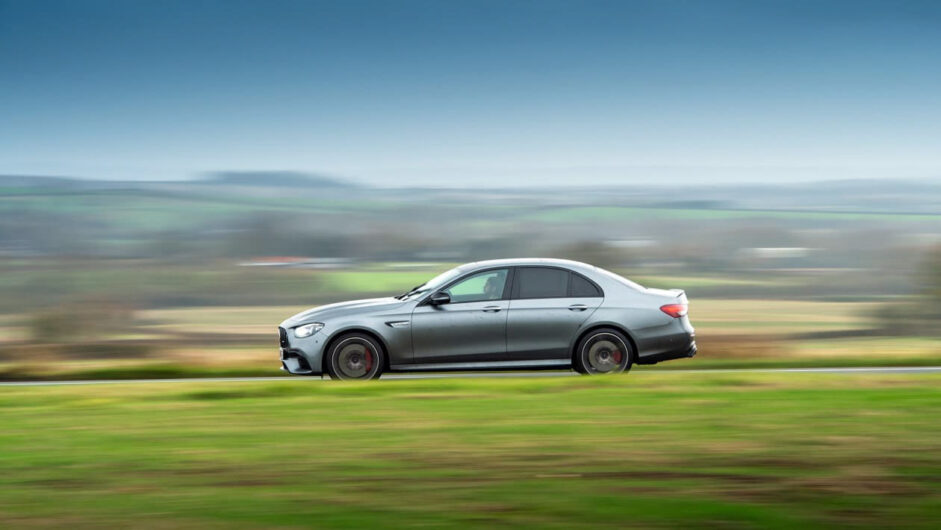
The good news is that in Sports+ and Race modes, the dampers reinstate the stiffness that’s been dialled out in other modes, meaning that the E63’s incredible sharpness and poise is maintained – it’s just more nuanced than before. Now more than ever, it makes effortless progress down A-roads and motorways, but is then explosive and energetic on twistier tarmac.
Its real potency can be attributed to its engine. There’s masses of low-down grunt, typical of a forced-induction motor, meaning the whole car never feels as heavy as its quoted figures when you accelerate. What’s not typical of a turbocharged engine is that there’s very little turbo lag. You don’t have to be wary that there might be a heap-load of unexpected power unleashed moments after you press the throttle. Instead the delivery is linear and practically instant.
The rest of the E63’s pace can be put down to its fantastic traction afforded by its four-wheel-drive system. But although there’s grip when you need it, don’t think the E63 is like other German all-wheel-drive supersaloons and estates – it isn’t. The E63’s 4Matic+ drivetrain has been very cleverly calibrated to not feel very four-wheel-driven on the road, with genuine throttle adjustability right at the apex of a corner helping it rotate just enough as you squeeze the accelerator. Only once things get a bit squirrely on the exit, when you actually want some help, do you really sense the front wheels helping drag you straight.
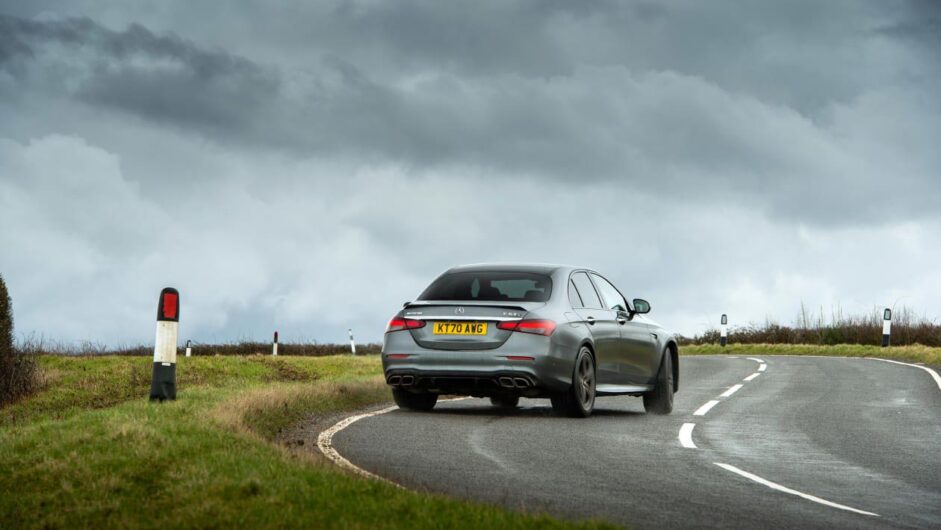
The engine’s delivery, combined with the drivetrain, makes the E63 an incredibly confidence-inspiring and natural car to drive quickly. The steering, although it doesn’t exactly chatter with feedback, is crisp, fast and allows you to react appropriately to the chassis, further helping you tune into driving the car. Not only is the E63 far more alert and agile than you’d expect of a car this size, it offers up a thoroughly enjoyable, deeply involving and exciting drive too.
Thankfully, no matter which model you choose in the range, the driving experience is very similar. The extra weight of the estate barely makes a difference to the way it corners or accelerates, mostly thanks to the masses of performance available. It rides firmly regardless of the chosen damper setting, feeling a tad more edgy and brittle than rivals like the M5 or RS6, but wheel control is still impressive so you won’t find yourself wincing over potholes or avoiding rougher road sections for fear of bursting a tyre.
Of course, the S’s party trick, its Drift Mode, makes it feel very different to the regular car once you’ve engaged it. The rear tyres are so willing to break traction that, despite its long wheelbase, it snaps into a slide as soon as you touch the throttle. Once sideways, however, the long E63 feels far more controllable, the engine feels as though it could spin the wheels forever, and the reactive steering just helps you keep it at whatever angle you desire. It’s deeply childish and totally unnecessary, but wonderfully good fun.
L/100km and running costs
If you look at the E63 as a practical five-seat saloon or vast estate car, then it is not a cheap car to run. Think of it as a rapid, viciously accelerating missile of a car, which it is, then it’s amazingly cost-effective.
Officially, the big AMG on the new WLTP cycle is rated at 12.1L/100km on a combined cycle. That’s a big drop from the 9.1L/100km it was rated at under the previous NEDC cycle, making it clear how well-suited small-capacity turbocharged engines such as this were designed to be at flouting the testing cycle. The estate, which is 105kg heavier, is even less economical at 12.4L/100km.
While on the subject of Drift Mode, if you’re going to partake in the sort of sideways shenanigans it encourages, you’re going to wear out the rear tyres rather quickly. A pair of 20-inch, 295-section, 30-profile Michelin Pilot 4 S tyres for the back wheels will set you back around $670. The 265/35 20 fronts are cheaper, around $605 a pair, but it’s unlikely you’ll need those quite as frequently
Interior and tech
The E-class’s interior is a mix of well-placed, ergonomically pleasing controls, decent materials (Nappa leather and standard carbonfibre), and the sort of trinkets you might expect on an expensive Mercedes, such as coloured interior lights, twin-LCD screens and fancy analogue clocks. Despite being an AMG, however, there aren’t many overtly sporty elements to the interior, although AMG’s latest steering wheel design, complete with two small LCD screens, definitely raises the sporting factor.
A pair of heavily bolstered front seats are standard, but the hard-backed buckets that used to be on the options list are no longer available. The standard units are supportive and comfortable, and feel less over-padded than the seats in the BMW M5 Competition.
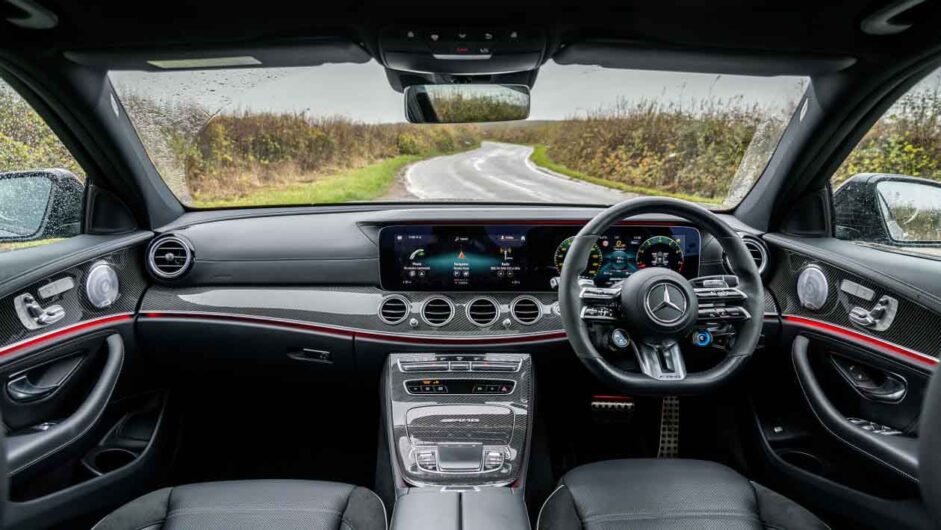
Mercedes’ newest MBUX infotainment system hasn’t quite migrated to the E-class yet – that will happen with its imminent facelift – but the previous Mercedes unit is still very functional, even if it lacks BMW’s crispness or an Audi MMI-Touch Pro’s user-friendliness.
Look beyond the upholstered sections and you’ll spot a few cheap plastics around the centre console and door mouldings, but all things considered they’re not a deal-breaker.
Design
Thanks to some awkward model-cycle timing, the Mercedes E-class is often revealed right at the end of a design era, with an all-new S-class generally driving forward a new design direction that’s generally missed out on by the E-class. As a result, it’s generally given a fairly hefty mid-cycle update to suit the rest of the range, of which this generation has, but perhaps without the extremes of it’s predecessor. The overall stance is much the same for the update, however the reformed front and rear bumpers are noticeable and do suit the 63’s character.
This time around, AMG has fitted the usual Panamericana grille, giving it some extra visual punch which was needed in comparison to the Audi RS6. Yet the overall design is certainly more nuanced than it appears. Like BMW does with the M5, the E63’s body-in-white is shared with lesser E-class models, but fits bespoke panels forward of the A-pillar.
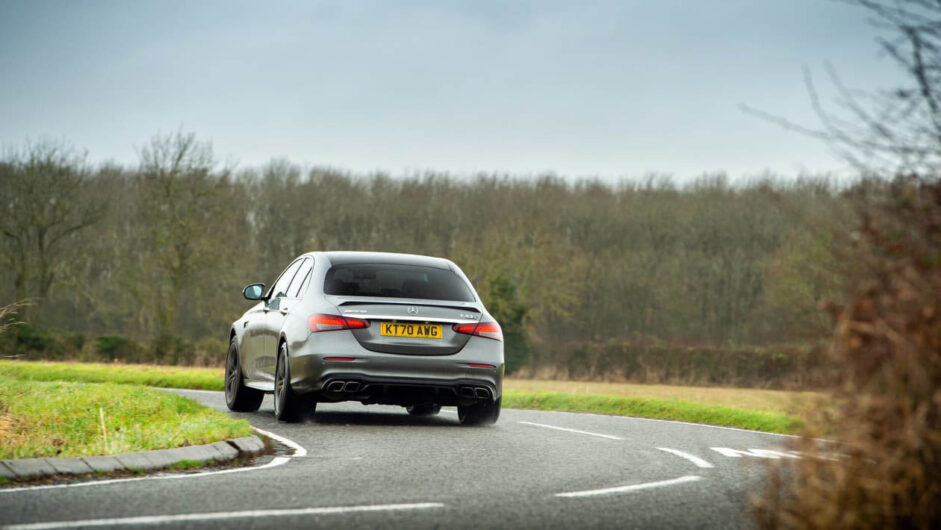
The main difference is the E63’s adoption of a nose cone-style front bumper, with the bonnet shut line sitting behind the front grille, rather than forming its leading edge as on normal E-class models. This is enhanced by the wider front arches and a domed bonnet, both of which are bespoke to the E63. The effect isn’t immediately recognisable, but put an E63 next to a standard E-class and the differences are certainly visible.
If you’re after a subtle E63 S it might be tricky, as AMG’s removal of silver wheels, brushed alloy brightwork or a smaller wheel and tyre package make it an aggressive car no matter the colour and specification in 2020.
This article originally appeared at evo.co.uk
Copyright © evo UK, Dennis Publishing

